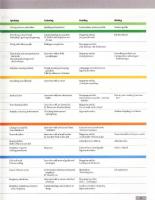Situational English part 1 studentʻs book
215 34 2MB
English Pages [82] Year 1965
Recommend Papers

- Author / Uploaded
- The Commonwealth Office of Education
- Australia
File loading please wait...
Citation preview
The complete course consists of
120
teaching Units:
Situational English-Part 1 Students' Book and Teacher'sBook (containing Units 1 - 40) Situational English-Part 2 Students' Book and Teacher'sBook (containing Units 41 - 80)
Situational English Part Students' Book
Situational English-Part 3 Students' Book and Teacher'sBook (containing Units 81 - 120)
The Commonwealth Office of Education, Sydney, Australia
Situational English-Language Picture Series (A supplementary visual aid for use by the teacher in the classroom in association with all three Parts of the course.)
1 i
~f se td
I/ This Course has been adapted by the Commonwealth Office of Education from English for Newcomers to Australia (4th edition), which it prepared for the Australian Department of Immigration Permission to publish the adaJ)ted course has been given by the Australian Government
y
~
Is;
pf
,ii
;h I
s e pf !
i
lh ► 1111111 ►
•••
111111111111111
LONGMAN II
t le
About this book-Note for teachers LONGMAN GROUP LTD London Asrndated companies,branchesand representatives throughoutthe world.
© The Commonwealch Office of Education, Sydnt'y, Australia 1965 All rights reserved. No part of this publication may be reproduced, stored in a retrieval system, or transmitted in any form or by any means, electronic, mechanical, photocopying, recording, or otherwise, without the prior permission of the Copyright owner.
First published 1965 Second impression 1966 Third impression 196 7 Fourth impression 1968 Fifth impression 1969 Sixth impresswa 1970 Seventh impression 1971 Eighth impression *1973
A'inth impression "1.974 Illustrations
by A. Eldridge
ISBN O 582 52095 9
Printed in Hong Kong by Yu Luen Offset Printing Factory Ltd
Situational English-Part I ( Students' Book) is the first of three Student's Books belonging to a course written for use with adults who are beginning the study of English as a second or foreign language. The course is for use in the classroom, and presents an aural/ oral approach. The Students' Books are not intended for self-study without a teacher. Each of the three Students' Books is matched by a corresponding Teacher's Book. Each Teacher's Book provides a general statement of the principles of the Australian Situational Method (on which the course is based), and provides the teacher with the following kinds of guidance: a treatment of teaching techniques; guidance on lesson planning; a graded section on the teaching of English pronunciation; and detailed suggestions for the aural/oral teaching and practice of the material in forty teaching Units. Each Teacher's Book also provides an Index covering the material introduced in all three Parts of the course. The following are the special features of the course: *Grammatical points are presented in sentence-patterns which show their function and meaning and which are arranged in a carefully graded teaching order. *Each new sentence-pattern introduces only one new point of sentence structure. *Points of common difficulty for foreign students of English are given special attention. *Aural/oral presentation and practice are immediately consolidated through reading and writing. *Besides suggesting ways of presenting and practising new work meaningfully, each Unit in the Teacher's Books gives guidance on the syllable-stress of new words and on the sentence-rhythm of new sentence-patterns. V
*Groups of reading passages, controlled in sentence structure to the level of language reached by students, are provided at regular intervals in the Students' Books, while the Teacher's Books contain questions for testing comprehension of these passages. *Exercises are provided for students' written practice of what they have mastered orally. Situational English is based on more than a decade of study and experiment by the Office of Education through its Language Teaching Section, which is under the technical direction of Mr Neile Osman, M.A., Dip. Ed. The shaping of early phases of the work for use in classes for adult immigrants owed much also to the work of Dr R. G. Crossley, B.A., Ph.D. and Mr G. A. Pittman, B.A., Dip. Ed. The course has been made available for publication by courtesy of the Australian Government.
VI
Contents
Page About this book-Note Contents
for teachers
V
vii
Units r. I - YOU - HE - SHE - IT .. 2. I am ... - You are ... - He i§... She is ... - It i§. .. . I'm here. You're there. - Mr, Mrs, Miss 3. I'm English. You're tired. 4. Numbers: I - 12. 5. This is Mr Miller. That is Mrs Miller. 6. This is ~ leg. (your, his, her, its). This is Mr Miller.'.§_leg. What's this? What's that? 7. What's your name? What's your address? Social phrases. 8. What's the time, please? It's one o'clock. a quarter to one. a quarter past one. half past one. Social phrases. 9. Numbers: 13 -- 20; 30, 40, 50 ... JOO 10. This is '! book. One book - two book1. Numbers: 21 - 100. Money: 1p ... £1 vu
2
4
7 8 9
12 14
17 18
Units 1-ro.
READING PASSAGES:
Joe Smith and his friends. I want two rooms, please. 11. This cup is empty. Is this cup empty? Is it empty? -Yes, it's empty. -No, it's full. Is this cup empty or full? -It's full. This cup is empty but that cup is full. He's very old. 12. He isn't old. You aren't young. I'm not hungry. 13. Time: minutes. (It's 10 past 5. It's 23 minutes to 6.) I 4. Social phrases. Money: £1 ... £wo (with pounds and pence expressed; I 5. This is an apple. What's your job ?--I'm ~ mechanic. 1-15.
Page• Units 23 26 25
Vlll
I
22. Colours (red, green, yellow, etc.). Numbers: hundreds, thousands, millions. 23. Is this box big? - Yes, it is. - No, it isn't. This is ~ bird. The bird is white. 24.
77 Bo
ON - UNDER - IN
25. 1-25. 31
35 37
42
READING PASSAGES:
John's girl-friend. George Scott's family. 16. He's a young man. Is it a pencil? It isn't a cup; it's a glass. 17. That's the moon. 18. Days of the week. Weather. (It's hot today.) 19. WE - YOU - THEY. We're students. Are they tall? They aren't tall. 20. Bill and Tom are young. Our cups are empty. Their cups arc empty. 1-20. READING PASSAGES: At the Zoo. The Miller family-their week. 2 1. A brush - two brush~; a foot - two feet. Here is -some water. Here are --some matches.
-
Page 74
45 47 48
57 58
62
66
67 71
83
READIN.G PASSAGES:
Joe Smith's office. Dr King's telephone call. 26. OF (a glass of water) Social phrases. 27. HAVE - I have a watch. He has a car. 28. This box is big and that one is small. This is a big box and that's a small on~ I want the big one. 29. Where's the hospital? - It's over there. (straight ahead, on the left, on the right) 30. These are books. Those are books. . . --Cups are things; they aren't people; they aren't animals; they aren't birds. 1-30.
53
Here are some apples. The apples are in the box. Where's my hat? - It's on that hook. Where are my shoe~?
87
88 go
93 97
JOO
102
READING PASSAGES:
Joyce Fraser's boy-friend. A visit to the solicitor's office. The school with a tiled roof. 31. Money: £1 ... £100 (without pence expressed) How much is that tic? 32. This is Johni arm. That's -the arm of -- the chair. 33. Numbers: roo ... 1,000,000. 34. Money: revision. 35. Age. (How old are you'! - I'm 36.) .. 1 -35. READING PASSAGES: Mrs Smith's new dress. Mrs Blake's visitors. . . IX
J07
ro8 rng 110
114
116 119
122
124 12.'j
Units 36. I have !! cold. I have influenza. Temperature. 37. There is ... There are ..... There isn't ... There aren't .. Is there . . . ? Are there . . . ? 38. He's !!IEngland. She's in Edinburgh. 39. IN FRONT OF - BEHIND - BETWEEN 40. These are red apples and those are green ones. Give me the red ones. 1-40. READING PASSAGES: A letter from Lawrence. The green medicine ... The yellow tickets. Buying a second-hand car.
Units Units
131
138 140 143
I
I
146 1 47
148 149
YOU
SHE
HE
...,©itf
",,,0t-: IT
X
I
127
YOU
are in Part 2. 120 arc in Part 3.
41 - 80 81 -
UNIT
:lr~ page one
IT
UNIT
•
HERE-THERE
2
l'M HERE.
I AM GEOll.;ESCOTT.
I am George Scott. I'm George Scott.
lli.1_=
I am=
You are John Clark. You're John Clark.
I'M
HE IS MRMILLER..
)1
HI'S HERE. SHE'S THERE,
~
/You arc= Yol(iJe= YOU'RE/ SHE IS Mlt.SMILLER.
You are there. You're there.
I am here. I'm here.
SHE IS MISS COOK.
He is here. She is there. He's here. She's there. rr--~1---.
He is Mr Miller. He's Mr Miller.
She is Mrs Miller. She's Mrs Miller.
He is = I-l£'%s= HE'S
I I She is =
I am I'm You are You're He is He's
She is Miss Cook. She's Miss Cook. She'j's = SHE'S :,,,,.,c
George Scott. John Clark. Mr Clark. Peter Miller.
You are You're She is She's
I
2
page two
It is here. It's here.
It is there. It's there.
/ It is = I(is = IT'S /
I am I'm I
-_-___ -___ \~---,,
Mrs Miller. Nell Miller. Miss Cook. Anna Cook.
I'm
here.
You're He's She's It's
here. there.
3 page three
t!),o"~~~tf< 'L ~~(I
0
~
~,~ q.
*e~
~(1Gf ti' I'm You're
He's She's
)
cs.
Brazilian. Indian. Japanese. Australian. English. She's ill.
itt~
,, ---~-
'
L.
•
I'm hot.
I'm cold. 4 page four
It's hungry.
It's thirsty. 5 page five
I'm
3. 4. 5. 6. 7. 8.
English. hot. cold. hungry.. thirsty.
You're
He's She's It's
Read: JOHN: I'm John Clark. I'm thirsty. I'm hot. ANNA: I'm Anna Cook. I'm cold. I'm tired. JOHN: You're ill. MR SCOTT: Anna is ill. She's cold. She's tired. Sh~'s ill. Exercise
A: Example
1. -
2. -
3. 4. 5. Exercise
B: Example
Answer He - Kenyan. I - hot. 3. Anna - ill. 4. She - here. 5. YouItalian. 1.
Answer 1.
2
3 4 5 6
s-
SIX
(not 1)
7 seven
7
eight
8
nine
"
8 9 (not lt)
IO
II
I,
12
I + 2 3 One and two are three.
hungry.
6. 7. 8. g.
(not r) (not 8) (not-')
JO ten eleven 11 twelve 12
4 + 5 9 Four and five are nine.
GIVEMEOIIE, PLEASE,
IO.
It - there. He - Mr Miller. Mrs Miller - English. I - tired. You - cold.
C: Example / He is hot.= He -
2.
one I two 2.. three .3 four 4five
I
YOU. (Ull.
2.
Exercise
NUMBERS
are cold. is George Scott. is Anna Cook. are there. am tired.
I You
" UNIT 4
thuti~.
am
'
I
-- am thirsty.
Answer
You - ill. You are ill. He is Greek. He - fuee_k. You are tired. = You - tired: - It - here. It is here. I - hungry. I am hungry. She - thirsty. She is thirsty.
I am cold. She is here.
Give me one, please. - Here you are. - Thank you.
hot
He.'sh.ot. I - cold. -~ She - here. 6 page
■ SIX
Give me Show me I want
one,
Take
ten.
three, five,
please.
7 page seven
Thank you.
~ ~
Exercise A: Write in figures: Example Answer five three seven four SIX eight Exercise B: Write in words:
nine
ten
This is Mr Clark and that's Miss Green. Mr Clark is here and Miss Green is there. Exercise A: Example
eleven twelve
I
This is Miss Cook. She's -.
T~ ia Mi.6s
Answer
Coo+..
Slu:.s~-
This is Mr Clark. He's- . . 2 . That's Barbara Green. She's3. That's George Scott. He's- . 4. This is Mr Miller. He's-. 1.
Example
I
+ 3= OM~ ~
Answer
1.5+6=11 2. 7 + 2 = 9 3. 9 + 3 = 12
4
1
4. 2 + 4 = 6 5. 3 + 4 = 7 6. 6 + 2 = 8
(U,(, ~-
7. 8+3=11 8. g.
I I IO
+ +
I -
Exercise B: Example
12
Answer
I ~ II
I - is John
Clark. He's here.
Thi.oi.6 Jo1w.Clari...He1.s hut.
is Miss Green. She's here. 2. is Peter Miller. He's there. 3. Mrs Miller is here. -· is Mrs Miller. 4. Anna Cook is there. - is Anna Cook. 1. -
UNIT 5 THIS-THAT Mr Miller is here. He is here. He's here.
This is Mr Miller.
Mrs Miller is there. She is there. She's there.
That is Mrs Miller. That's Mrs Miller.
That is = That_'b = THAT'S
UNIT 6
I
]
j This is Miss Cook. She's here.
That's Miss Cook. She's there. 8
page eight
WHAT'S THIS?
WHAT'S THAT? I
~
This is my nose.
-
I
I
T~AT IS YOUR.>IOSt.
~~ That is your nose. That's your nose.
9 page nine
I YOU
HE
SHE
IT
~-
\~\ ;\;·'-. l) "".,"
1
(ii
ten pence twenty pence fifty pence a pound
Exercise
~
Answer
-
(~
~
_,.....
One hundred pence = one pound mo pence = £ 1
I
Example
~ .
Answer
- ~VX I • 72 2• 4 1 3· 57 4. 100
5 • 98 6 • 24 7- 6 5 8. 88
l~~~o::~1
acoat;2. a bank; 3. a shirt; 4. a cuff; -
5. 6. 7. 8.
1.
a a a a
bird; ring; sleeve; hand; -
9. a a 1 1. a 12. a 10.
key; tie; sl\.oe; collar;
JOE SMITH AND HIS FRIENDS
B: Write and say:
Example
72p 2. 41p 3· 57P 4. Ip I.
36p
~
Answer
Exercise
,,,_C/
_
A: Write and say:
Example
Exercise
~---=;,
I
"".,"""-,
Exercise D: Write and say:
svx(11-AfL-
5. 78 6. 24 7. 65
8.
C: Write and say:
Example Answer
I
I
36
~ - s//X.
I. I
I
2. 3. 4·
72 41 57
5. 6. 7.
JOO
8.
£1 I'm My My My I'm
Joe Smith. Christian name is Joe. surname is Smith. foll name is Joe Smith. English.
That's Betty Smith. Her Christian name is Betty. Her surname is Smith. Her full name is Betty Smith. She's my wife.
I'm English, and my wife is English too. My Christian name is Joe and my wife's Christian name is Betty. My surname is Smith and my wife's surname is Smith too.
22 page twenty-two B
23 page twenty-three
This is John Clark. His name is John Clark. His Christian name is John. He's Mr John Clark. His address is 4 Dry Street, Canterbury,
.-That's Peter Miller. He's my friend. He's English.
That's John Clark. He's my friend too. He's Australian.
Peter Miller is my friend. He's English. His hair is dark. Joh~ Clark is my friend too. He's Australian. His hair is fair. Peter' surname is Miller. His full name is Peter Miller.
~
England.
This is Barbara Green. ~ Her name is Barbara Green. •• J• Her Christian name is Barbara. "' She's Miss Barbara Green. Her address is 2 7 Garden Street, Ashford, England.
I WANT TWO ROOMS, PLEASE RECEPTIONIST: Good afternoon, Madam. MRS RYAN: Good afternoon. I want two rooms, please.
John's surname is Clark. His Christian name is John. His full. name is John Clark. ., Peter is Mr Miller John is Mr Clark I'm Mr Smith
Mr Peter Miller. Mr John Clark. Mr Joe Smith.
My wife is Mrs Smith-Mrs Joe Smith. Her Christian name is Betty. Her name is Betty Smith, but she's Mrs Joe Smith.
mr. ).e;/md,
31/o~.dk/:
~
i:'41(~
ENGLf{N~
This is my name and this is my address. My address is 3 Hope Street, Canterbury, England. My wife's address is 3 Hope Street, Canterbury, England, too. Peter's address is 12 Pitt Street, Ashford, England. 24 page twenty-four
I want two rooms, please. RECEPTIONIST: Very well, Madam. What's your name, please? MRS RYAN: Mrs Jean Ryan. And this is Mrs Cole - Mrs Roma Cole. 25
page twenty-five
RECEPTIONIST: What's your address, please? MRS RYAN: My address is 3 Ward Street, Belltown, Tasmani Australia. And Mrs Cole's address is g Davey Street, Blacktow Victoria, Australia. RECEPTIONIST: Thank you, Madam. What's your nationalit - -- please? MRS RY AN: I'm Australian, and Mrs Cole is Australian too. RECEPTIONIST: Thank you, Madam. MRS RYAN: Here's my luggage. RECEPTIONIST: One, two, three, four suit-cases. MRS RY AN: And a cabin trunk, and a hat-box. Here's Mrs Cole luggage. RECEPTIONIST: One, two, three, four, five suit-cases, tw, cabin trunks and two hat-boxes. MRS RY AN: Yes, five suit-cases, two cabin trunks, and tw hat-boxes. RECEPTIONIST: Herc's your key, Madam. Room number 1 MRS RYAN: Thank you. RECEPTIONIST: And here's Mrs Cole's key. Room number 11 MRS RY AN: Thank you very much. RECEPTIONIST: And here's a porter .... He's carrying you luggage now.
TIIAT l>O& IATHEU.~
,,___,_,
This dog is here.
That dog is there.
I I
THIS TABLE /
19 HERE..
r-,. \~/\
I
THAT TABLE
18TKUtE.
8 This table is here.
That table is there. THIS M4N IS
~:::-
~
AND111.IT WOMAII 19 THEil£.
This man is here and that woman is there. This pencil is long. It is long. It's long.
This pencil is short. It is short. d It's short. &
That's THE inside. That's THE outside.
,--
ITTI ~n~ □\
A WINI>
'. ••••••••• •
TIIEBOTTOM
pi
A WALL
TIIEDOOlt·
_, I
H TIIE FLl>OR.
That's a window and that's a wall. That's the ceiling. That's the floor. That's the door.
Here's a house. Is that the kitchen? '- Yes, that's the kitchen. Is that the bathroom? - No, that isn't the bathroom; it's the dining-room Is that a bedroom? - Yes, that's a bedroom, and that's a bedroom too. Here's a Is that Is that Is that Is that
ffljA
room. the ceiling? the floor? a wall? a window?
-
Yes, that's the ceiling. No, that isn't the floor; it's a wall. Yes, that's a wall. No, that isn't a window; that's the door.
INDDW
..._
111AWALL
Here's a class. John Clark is a student, and Anna Cook is a student, and Frank Perrin is a student, and Barbara Green is a student. Mr Scott is the teacher.
54 page fifty-four
- No, that isn't the top; it's the front. - No, that isn't the inside; it's the outside.
55 C
page fifty-five
,~~
This is the north.
This is the west.
w◄
UNIT 18
N
► E This is the east.
...JIL
7 1
WHAT'S TODAY?
MAY
S Read: TOM: BILL: TOM: BILL: TOM: BILL: TOM: BILL: TOM: BILL:
This is the south.
Is this your house, Bill? Yes, Tom, this is my house. Here is the front door. It's a very big house, Bill. Yes, it's big and it's comfortable. Is this the !IE DIRTY OH£,
Wash the dirty one!
Fill the empty one! --1'
Say: He's washing the dirty one. He's filling the empty one.
98 page ninety-eight
99 page ninety-nine
Do This:
l'M P.UTTlNQ
MYMANOSIN
MVPOCUTS.
Put your hands in your pockets!
I ' ,HJJO,,
"
'
I ;.~
d,1
~'\
l'N'iTAKINGMY HANDSOUTOF
/t:i(b'\_MV POCK£TS.
o•,3-,
Take your hands out of your pockets!
\ STRAIGHT
'
AHfAO I
ON n1£
L£FT
i
___,'--
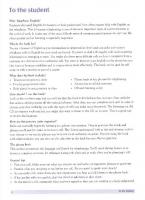
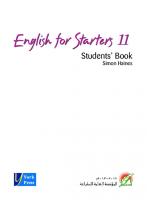
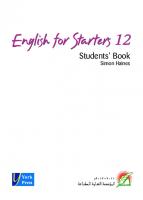

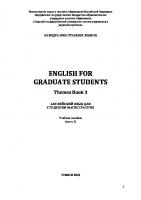
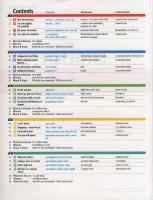

![English Spotlight 1, Part 2 Student Book (ETWC) [First Edition]](https://ebin.pub/img/200x200/english-spotlight-1-part-2-student-book-etwc-first-edition.jpg)
